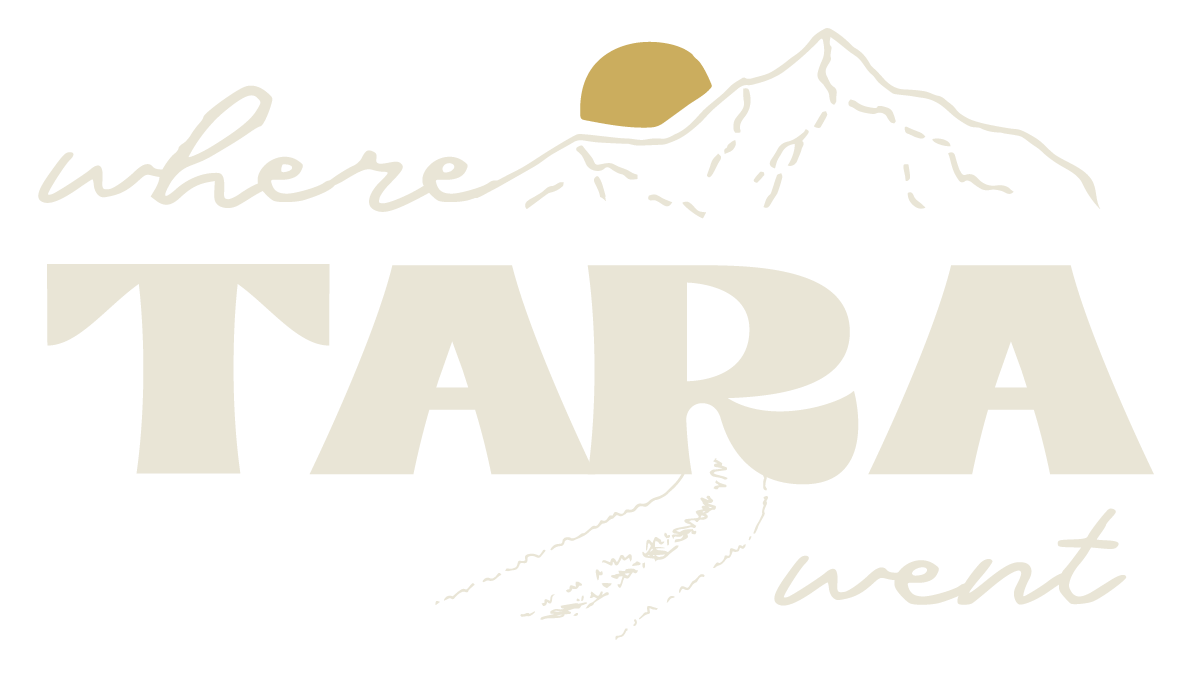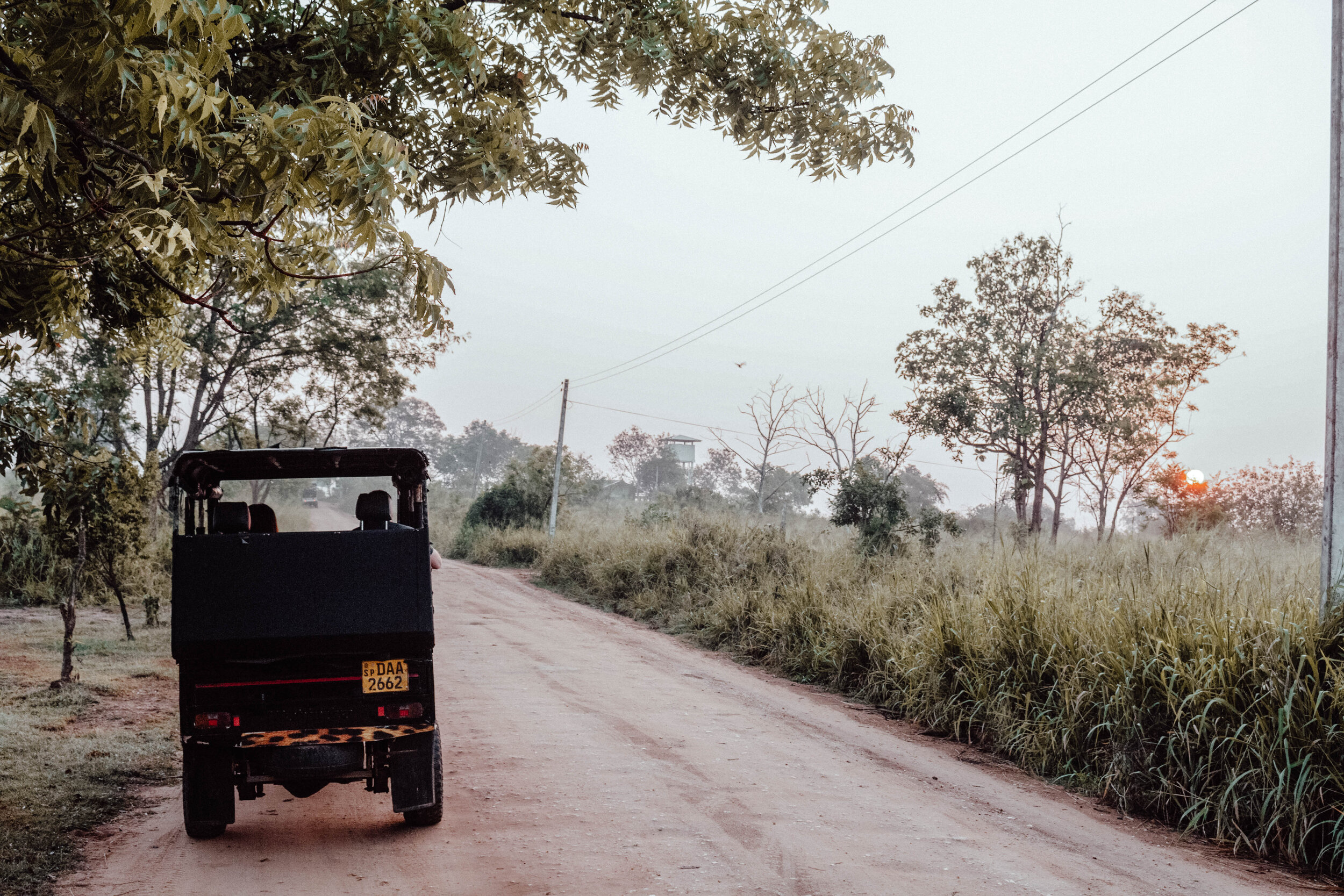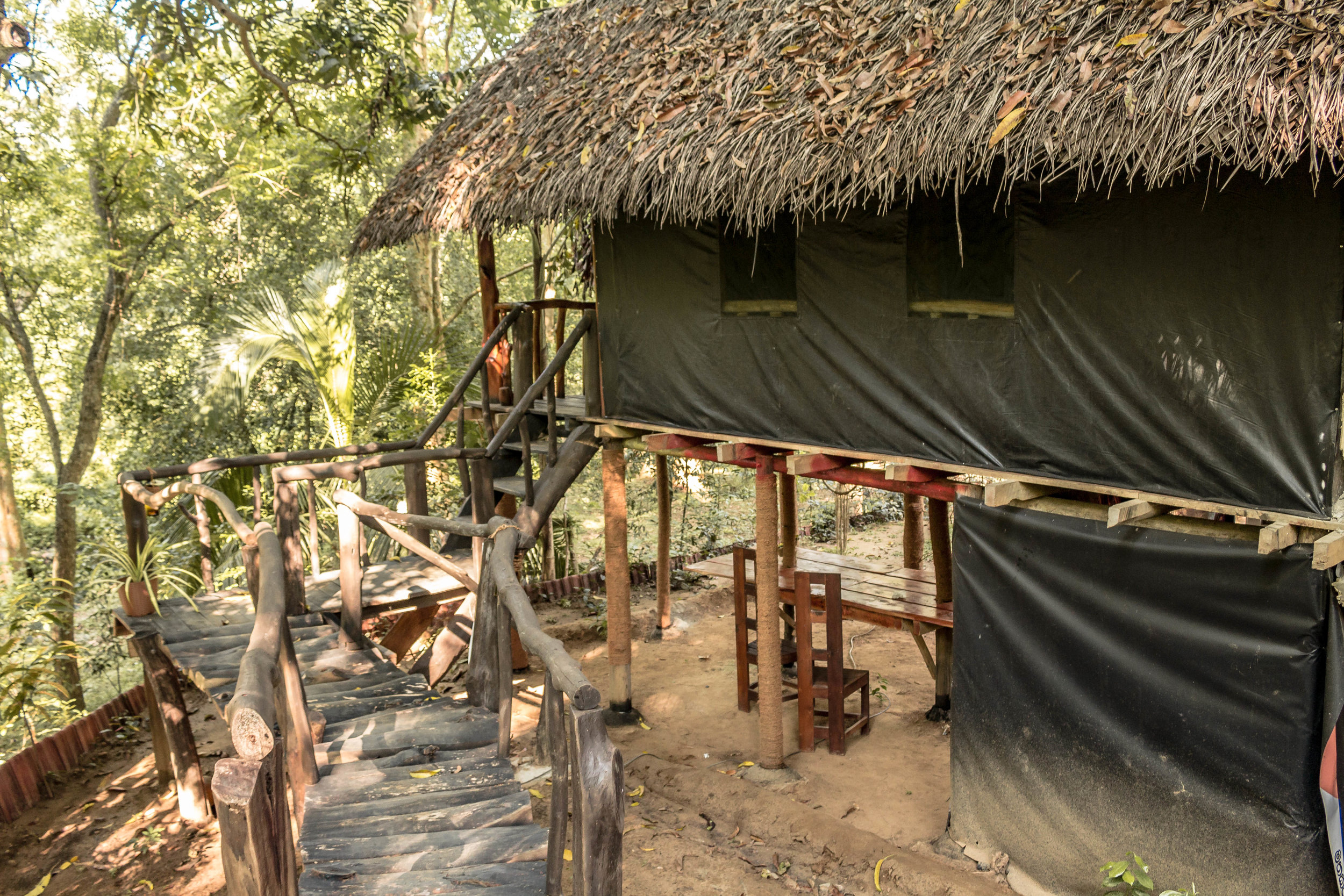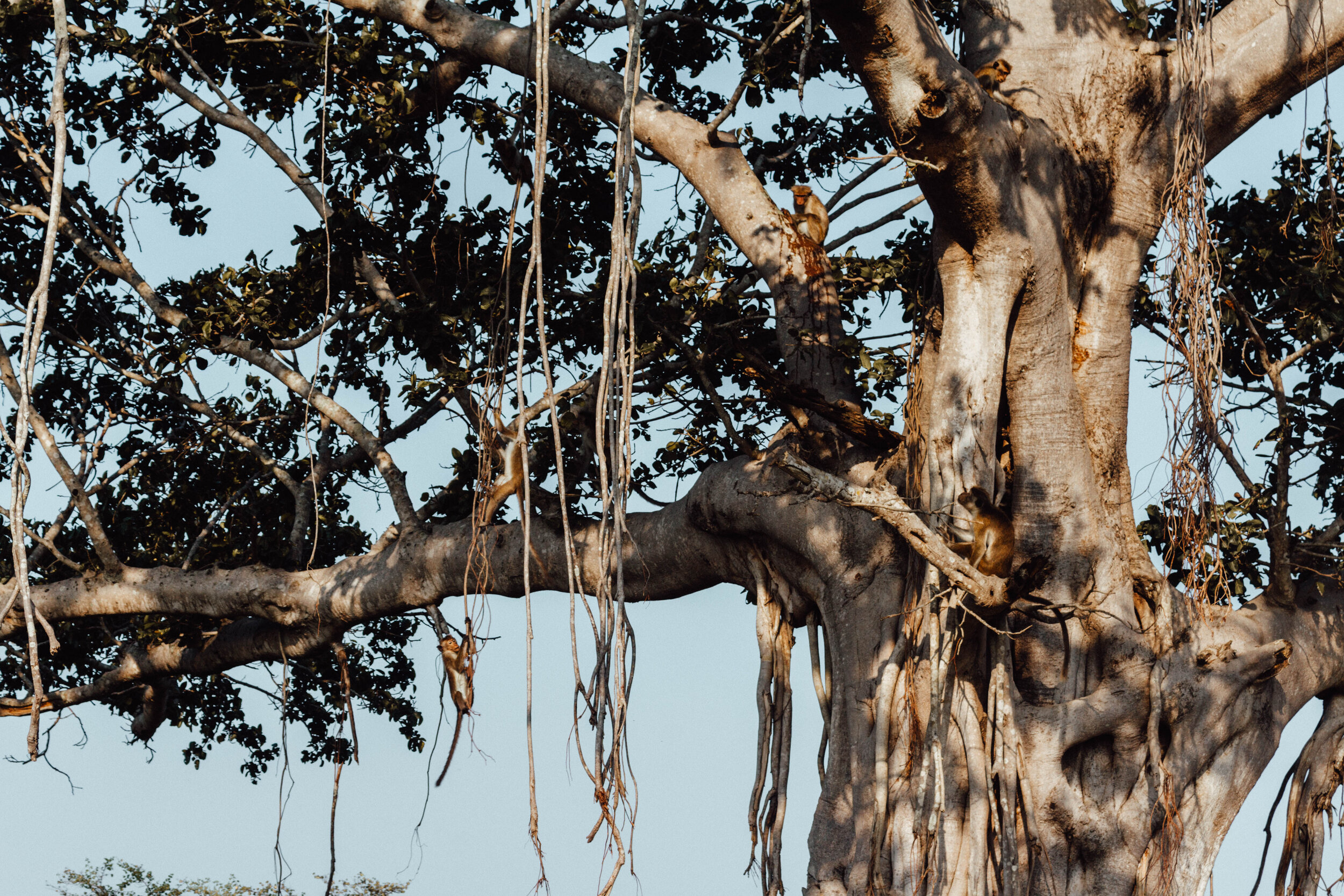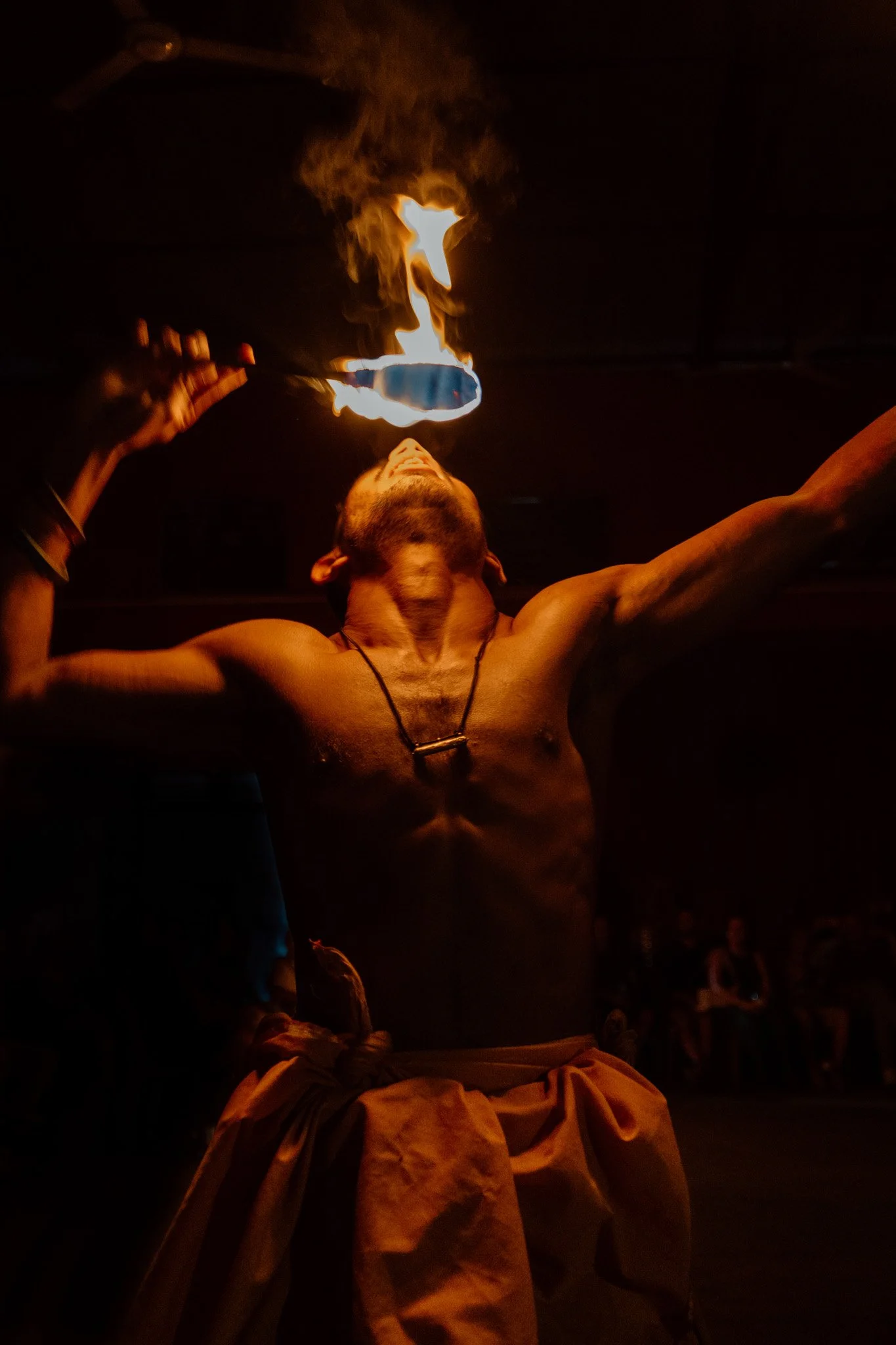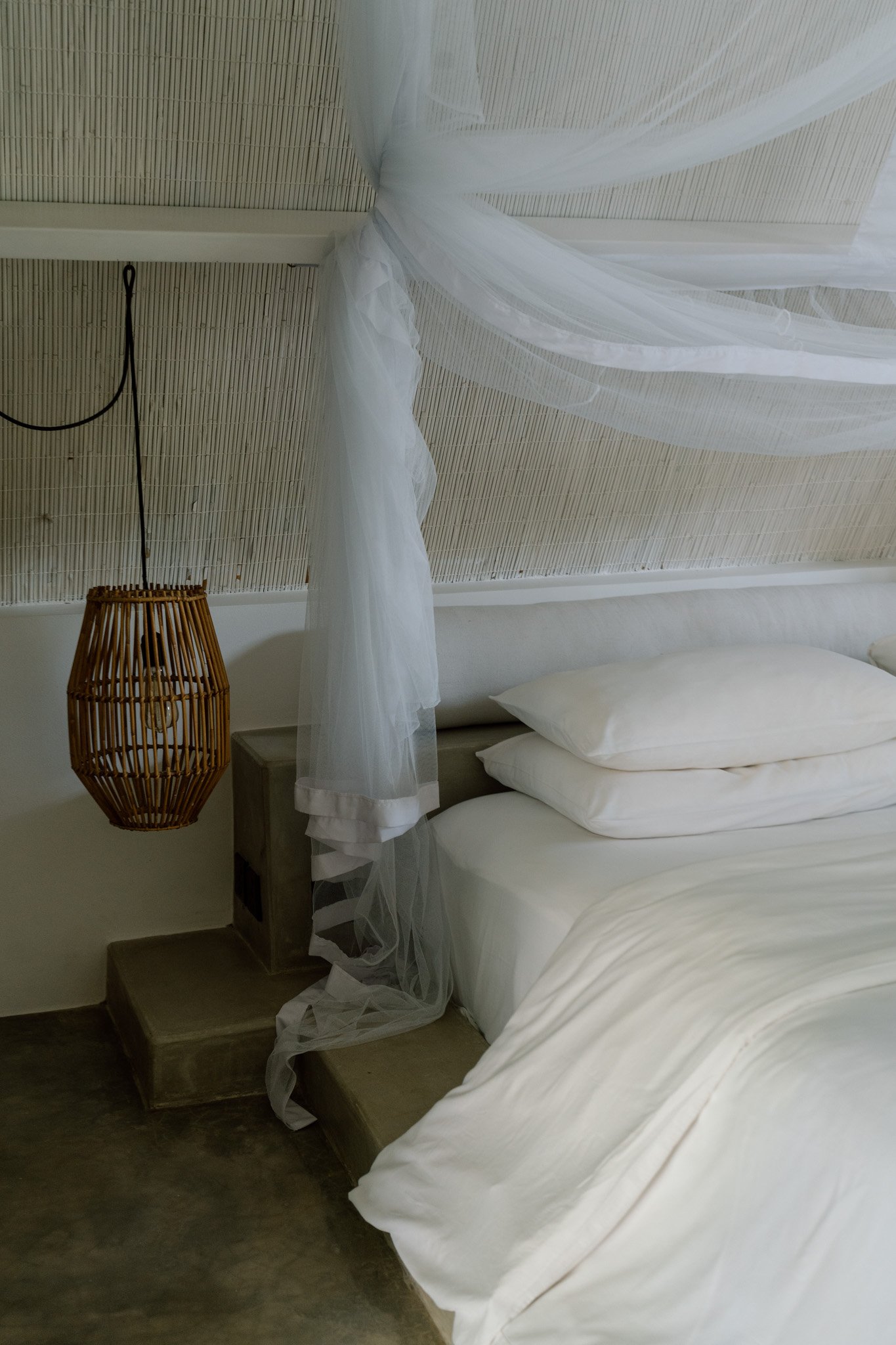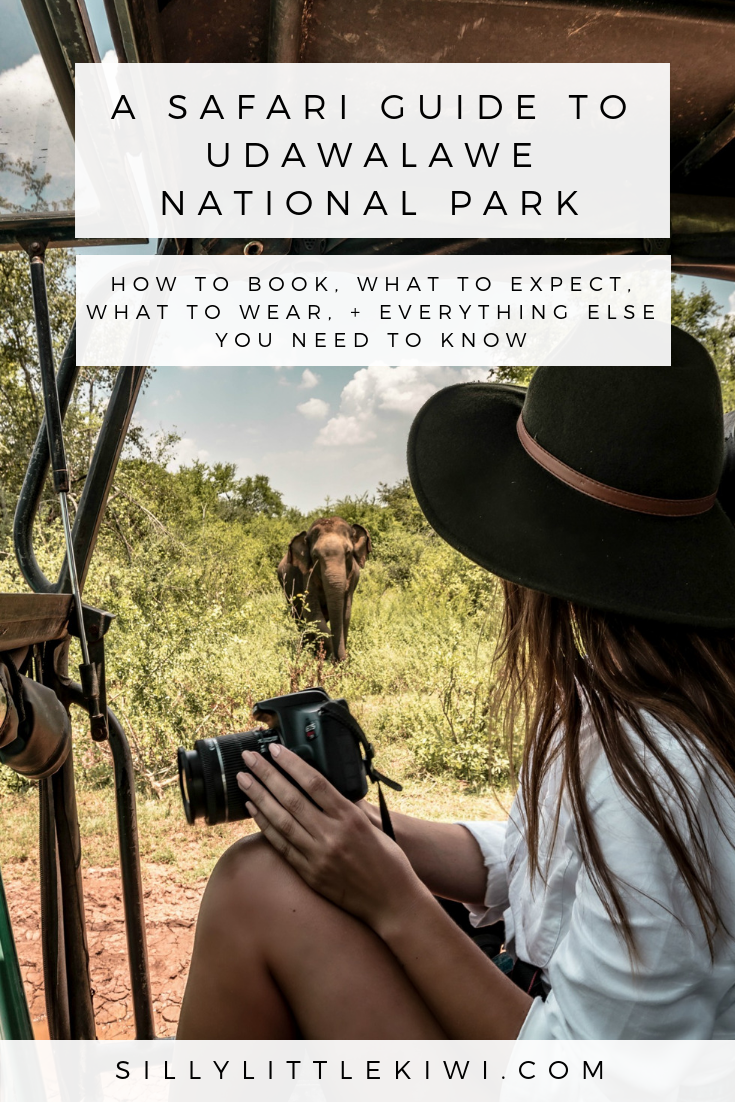the ultimate safari guide to Udawalawe, Sri Lanka: how to book + what to pack (Updated for 2025)
You can’t go to Sri Lanka and not go on safari. That’s exactly why I created this in-depth guide for Udawalawe National Park. It’s the third most visited national park in Sri Lanka, offering safaris for tourists looking to catch a glimpse of exotic wildlife in its natural habitat. Most people feel overwhelmed by the safari options available from the seemingly hundreds of travel agencies and tour companies that exist. Never fear, I got you covered.
In this post, you’ll find all the details to a Sri Lankan safari at Udawalawe National Park, which I hope helps you get all the answers you’ve been searching for so that you can plan the experience of a lifetime!
Udawalawe National Park vs. Yala National Park ↴
As previously mentioned, Udawalawe is the third most visited park in Sri Lanka. So, why did I decide to go there for my safari experience? A few reasons…
logistics
In order to get the absolute most out of my first trip to Sri Lanka, it made sense to go from Ella to Udawalawe. Going to Udawalawe broke up my journey from Ella to Mirissa.
costs
This varies, of course, depending on what you are looking for and how well you negotiate. Overall, we found the cost for Udawalawe more reasonable given our chances of seeing a leopard.
likelihood to wildlife
I really, really, really wanted to see a leopard. Most leopards are seen in Yala National Park. However, while they are more common in Yala than in Udawalawe, they are still rare. Yala National Park has 44 leopards living across the entire park. Since Yala is much bigger than Udawalawe, which still felt ginormous, spotting these leopards in the wild with all that ground to cover makes it a mission. Udawalawe is home to only an estimated 12 leopards, but its smaller area makes the likelihood of seeing a variety of wildlife higher because they all live in a smaller space.
Also, there is no “best season” for visiting Udawalawe. Other national parks have increased animal activity at certain times of the year, but Udawalawe is small enough and located in a part of the country where the weather doesn’t make for an optimal safari experience.
How to get to Udawalawe - the cheap way ↴
Now that you’ve chosen to safari at Udawalawe, you’ll need to get there! You can book a taxi or hire a private driver to get to Udawalawe, but it’s both a very expensive option if you aren’t in a group willing to split the bill.
The cheapest way to get to Udawalawe from Ella is via bus. First, catch the bus from Ella to Wellawaya. This journey will cost you 70 rupees per person {USD $0.40} and only takes 40 minutes. Then transfer at Wellawaya station to Line 98. Line 98 will take you to Udawalawe in a little over 1 hour and costs 125 rupees per person {USD $0.72}. The total journey took just a little over 2 hours, with stops and traffic, and cost USD $1.12.
Purchase your bus tickets once you hop on the bus; no need to pre-book or head to the stop hours early. Seats are first come/first serve and it’s anything but a traditional Western bus experience. Loud Tamil music blasts through speakers and colourful string lights flash. The bus moves fast and honks a lot. People on the bus are friendly and will always follow the etiquette of giving up their seat to elderly women and clergy {monks and novices}.
Where to stay in Udawalawe ↴
I highly suggest heading to Udawalawe the night before your safari. Book a place to stay, take the bus down, and get a good sleep before the early morning safari wake-up call. I did this and it was one of the best decisions I made logistics-wise while in Sri Lanka.
For once, it was Agoda, and not Booking.com or AirBnB that landed me a dreamy place in the jungle to stay. For USD $14 per night, The Wooden Hut by the River provides gorgeous and private accommodation for up to three people. A private shower with a stream-like spout makes the place feel a bit romantic, while also feeling rustic. Anyone who watched my Instagram stories knows I was my most excited self when I rocked up and saw the dreamy jungle oasis waiting for me! Especially since the owners continually brought me pots of tea pre and post safari, despite the early hour.
budget stays
Kottawatta Village | Perfect for budget travelers who want to be close to the action, Kottawatta Village offers cozy cabins and a peaceful vibe right near Udawalawe National Park. It’s simple, charming, and easy on the wallet.
Elephant Rest Udawalawa | A no-frills stay that ticks all the boxes: clean rooms, warm hospitality, and a location so close to the park you’ll be first in line for your safari.
mid-range stays
Kalu's Hideaway Udawalawe | This spot feels like a hidden gem—lush gardens, a dreamy pool, and plenty of space to unwind after a day of elephant spotting. The name says it all.
Elephant Trail | If you’re after modern amenities close to the wild, Elephant Trail has got you covered. There’s an on-site pool and restaurant, plus it’s super close to the park entrance for an easy safari start.
luxury stays
The Grand Udawalawe Safari Resort | Perfect for those who like their wildlife adventures with a side of luxury, this resort offers plush rooms, an expansive pool, and top-notch service. It’s close to the Elephant Transit Home, so you can catch the baby elephants at feeding time.
Mahoora Tented Safari Camp | For a splurge-worthy glamping experience, Mahoora delivers. Sleep under the stars in luxury tents complete with proper beds and hot showers, and enjoy candlelit dinners surrounded by nature.
We love using Booking.com to book the best places to stay around the world.
How to book a safari in Udawalawe National Park ↴
You can book safaris an overwhelming number of ways. The easiest way is to book through your accommodation. I booked mine through The Wooden Hut, arranging and negotiating things before I even arrived to Udawalawe via What’s App. The hosts were responsive and flexible. Many travelers do it this way. Alternatively, you can try to book online ahead of time {and miss the opportunity to negotiate price} or walk around Udawalawe town and select a company {though this eats up your time and could be overwhelming}.
Full-day vs. Half-day Sararis in Udawalawe National Park ↴
There’s a bit of debate about what option is better— a half-day safari or one that lasts a full-day.
Half-day safaris are a bit more affordable, however your time goes by so quickly it hardly seems worth the money you save. By the time we were warmed up and had really gotten into “safari mode”, it was nearly time for lunch. I’d only choose a half-day if I were on a very strict budget with no wiggle room in my wallet and if I were planning on catching transportation to my next destination.
A full-day safari can last anywhere from 8-14 hours depending on the company you book with and how you negotiate. Every company seems to customize their safaris to fit the client’s wishes. If you’d like a full-day, but aren’t keen for a 12-hour adventure, simply negotiate.
I opted for a full-day safari to maximize my opportunity to see as many animals as possible and because, ultimately, there isn’t much else to do in Udawalawe. You’re not missing anything by spending more time at the national park. In the end, I negotiated for an 8-hour safari with breakfast and lunch included and got to spend 10 hours riding around. In that time, I saw monkeys, crocodiles, water buffalo, 15+ elephants, parrots, peacocks, cranes, eagles, lizards, and deer. Truth be told, I saw way more elephants than I thought I would and heaps of bird species I didn’t even recognize.
What to wear for a safari in Udawalawe National Park ↴
The age-old question of “what to wear” is actually kind of important when on safari. Many people say to wear neutrals to avoid scaring away the wildlife or agitating them. Safari roads at Udawalawe are bumpy, so we got quite muddy when we rolled through wetlands to peep crocodiles. If you’re wearing clothing you rather not get dirty, you’re making a mistake. Breathable, lightweight fabrics will make your safari experience more pleasant, since Jeeps aren’t equipped with air-con and Sri Lanka gets very hot. I also wore my trusty Birkenstocks, but you may find yourself more comfortable in closed-toe shoes as you get tossed about in the Jeep. I felt really comfortable all day, even in the rough heat and during the sometimes rough ride.
Packing list for a safari in Udawalawe National Park ↴
sunscreen
a sunhat or baseball cap
sunglasses
camera
extra drinking water
tissue/toilet roll
bug spray/insect repellant
snacks {if not included in your safari package}
hand-sanitizer
binoculars {optional}
What to expect on safari in Udawalawe National Park ↴
You are not guaranteed to see any animals, since {yay} this isn’t a zoo. However, thanks to the number of animals that call the national park home, you are basically 100% likely to see wildlife. It’s really, really unlikely you’d see nothing while driving around. Within five minutes of driving around in my Jeep, I saw a family of deer, monkeys, and a muster of peacocks.
Some drivers don’t speak the best English. You can hire a guide who can explain the wildlife and conservation efforts in more depth, but it will cost you more. Our driver spoke fine enough English to point out the animals and explain some of the basic information about the park and its wildlife. Communication wasn’t an issue during my safari, but make sure you double-check while making your booking whether you need to hire a guide who speaks the language you require and if they can help you make those arrangements.
Overall opinon of safari in Udawalawe National Park ↴
My time on safari at Udawalawe National Park was without a shadow of a doubt one of those moments in life I hope to tell my children about. I had been waiting to go to Sri Lanka since last year when plans got postponed and swapped around, and going on a safari in a country so high on my “please, Universe, can you help me make this happen” list was indescribable. I will remember those ten hours in the Jeep forever. The watermelon and noodle lunch we had. The dirt that is still stuck to my skin. The elephant charging and the monkeys playing. Every moment is ingrained in my mind.
It was such a good time, in fact, that I decided to put together a safari photo guide! Watch this space for my favourite photos of the wildlife I saw at Udawalawe.
What to do next in Udawalawe ↴
After your safari experience, you might feel a bit of a come down. Don’t worry! Not far from Udawalawe National Park is the Udawalawe Elephant Transit Home. Luke found this and surprised me with a stop by on our way to the bus station heading to Mirissa. The transit home was created in 1995 by the Department of Wildlife Conservation. It was their way of taking larger steps towards elephant conservation and creating wildlife welfare programs. The transit home takes care of orphaned elephant babies, called calves, until they are resilient enough to be released into the wild {the national park}. There are some amputee elephants as well, and seeing one of them walk around on his prosthetic made me swell up a bit. Tickets are 500 LKR {USD $2.87} and the admission money goes directly to supplying milk powder to the elephants and the transit home. There is no petting, bathing, or feeding allowed and there is no “show”. You simply go to the transit home at a designated feeding time {every three hours starting at 9 AM}, purchase a ticket, and watch from a distance as the calves get fed by the trained elephant professionals.
